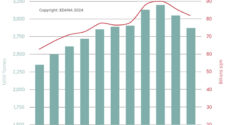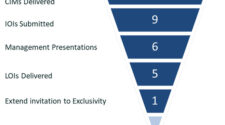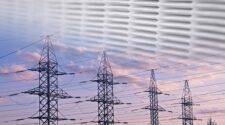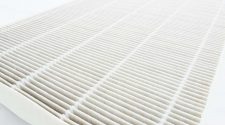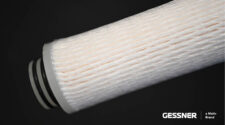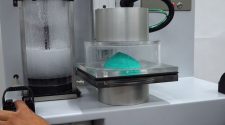Innovations to be meaningful have to respond to needs. Innovations can result from improved design or production. They are measurable in terms of lowering true cost. Cost can be measured idealistically or realistically as aggregates of life quality goals. In 2022 the idealism gave way to reality.
2022 set a record for changing true cost criteria. The February invasion of Ukraine changed the true cost equation instantly. The value of net zero greenhouse gases in 2050 was diminished when net zero can now be achieved with just one thermonuclear exchange.
The elimination of the Russian energy purchases resulted in many options to extend nuclear plant life, postpone the closure of coal plants and expand the conversion of solid fuels to energy which is carbon negative. The importance of filtration and separation processes to purify CO2, hydrogen and other gases became substantial.
Certain filtration technologies with high costs have been researched and innovations achieved. Mercury is very detrimental to compressors and pipelines. Typically activated carbon bed filters are used to separate the mercury from the gas. However, much of the potential extractable gas has very high mercury levels. New technology using ionic liquids substantially reduces cost.
The W.L. GORE Mercury Control System (GMCS) is a unique fixed sorbent system for capturing elemental and oxidized gas phase mercury from industrial flue gas. The system is based on discrete stackable modules that are installed downstream of a particulate collection system.
The idealism of Paris to solve the climate change problem has been trumped by the life quality goals, whether or not humanity benefits in the long term.
Drax is completing its 4000 MW bioenergy and carbon sequestration project with a new design of CO2 absorber supplied by Mitsubishi.
Europe is expanding its use of sewage sludge and food waste as a source of biogas and energy. Improved purification technology has been developed so that the biogas could be combusted and NOX control with selective catalytic reduction included.
The development of ceramic filters with embedded catalyst by Alkegen and others provides a cost-effective option for one device to capture particulate and sulfur dioxide (SO2) while reducing NOX, shorthand for nitric oxide and nitrogen dioxide, most relevant for air pollution.
Single Use Technology
New biopharmaceuticals kill cancer cells while not harming others. The process starts with cells extracted from an individual. The resultant drug is only applicable to that patient. Consequently, there are short batch runs followed by many hours of downtime for cleaning.
The alternative is single use bags, containers, filters, and centrifuges. This technology provides many innovation opportunities for filter and media suppliers.
Production Innovation
The filtration industry has relied on China for components. The opportunities in Southeast Asia have been framed by the China Belt and Road Initiative.
With the election of Xi Jinping to a third term the picture is changing rapidly.
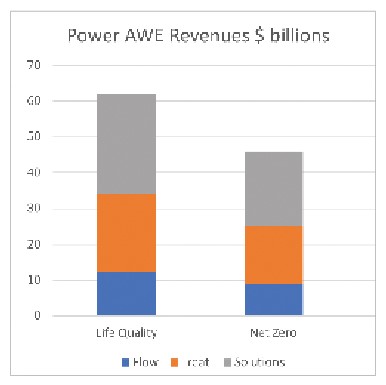
In his acceptance speech, Jinping depicted the Chinese Communist Party as a guardian of the one-party authoritarian state facing unspecified threats of “infiltration, sabotage, subversion, and separatist activities by hostile forces.” This siege attitude is sending chills through the filtration industry.
China has spent a trillion dollars to expand its influence in Asia, Africa and Latin America through its Belt and Road Initiative. But now tens of billions of dollars in loans have dried up and numerous development projects have stalled.
Jinping acknowledged that the Belt and Road Initiative had entered a stage where it has to navigate an “increasingly complex” web of issues.
So, filtration companies have the need to innovate to ensure the supply of components and to take advantage of the market opportunities caused by the Chinese change in direction.
One of the options is to expand filter production in Vietnam, India or other Asian locations.
One innovator is Hollingsworth & Vose (H&V), a manufacturer of advanced materials for filtration, energy and industrial applications. Today, it has 13 facilities in strategic locations across three continents: North America, Europe and Asia.
H&V is addressing the challenge by investing in its Mysuru, India plant. It is doubling manufacturing capacity to produce battery separators that serve the South Asia and global markets.
Where Will Innovation Be Most Needed?
Work on battery separators and other filtration technology which has been prioritized due to the program to reach net zero CO2 emissions by 2050 is being revised and filtration companies will need to adjust.
Assessing the Winning Power Plant Technologies
The power industry is one most affected by the political changes. Filtration has to be viewed in the larger context of the total air, water, and energy (AWE) spending.
Filtration is an important component in the Air, Water, energy (AWE) market1. Chart 1 represents annual expenditures for AWE products over the 2022 to 2050 timeframe under two scenarios. One is based on life quality decisions, such as made by Europe to continue operating coal plants temporarily. The other is the program to achieve zero net carbon emissions by 2050.
Flow includes pumps, valves, fans compressors, duct, piping, hose and couplings. It includes filters for compressors and for lubrication of rotating equipment.
Treat includes scrubbers, filters, combustors, pulverizers, SCR, and treatment chemicals.
Solutions include system design, service, IIOT, control valves, hose couplings and pump variable speed drives. It includes filters for gases and liquids extracted for continuous measurement.
Not included are construction, foundations, buildings or any electrical equipment.
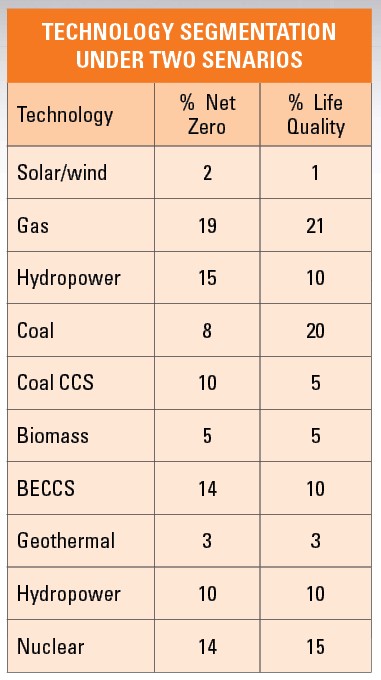
Monitoring Segmentation
Segmentation by technology can be seen in Chart 2.
The power industry will be substantially altered by aggregate life quality goals rather than idealistic ones.
The aggregate life quality goals in democratic counties will be determined by the voters. In autocratic countries it will be determined by the leaders. Neither the Russian or Chinese leaders will be prioritizing CO2 reduction.
The idealism of Paris to solve the climate change problem has been trumped by the life quality goals, whether or not humanity benefits in the long term. The filtration industry will be well advised to continually assess the changing goals and innovate accordingly.
1AWE Markets published by The McIlvaine Company



